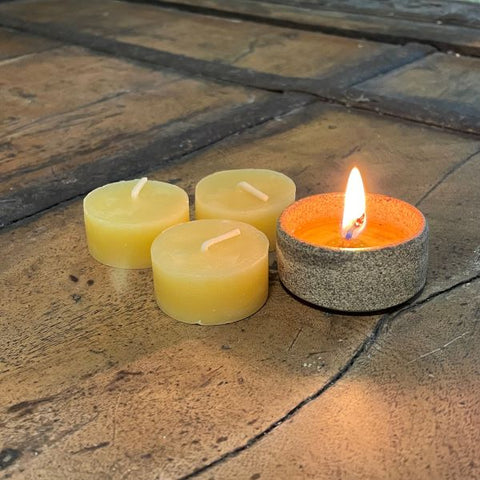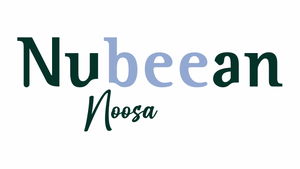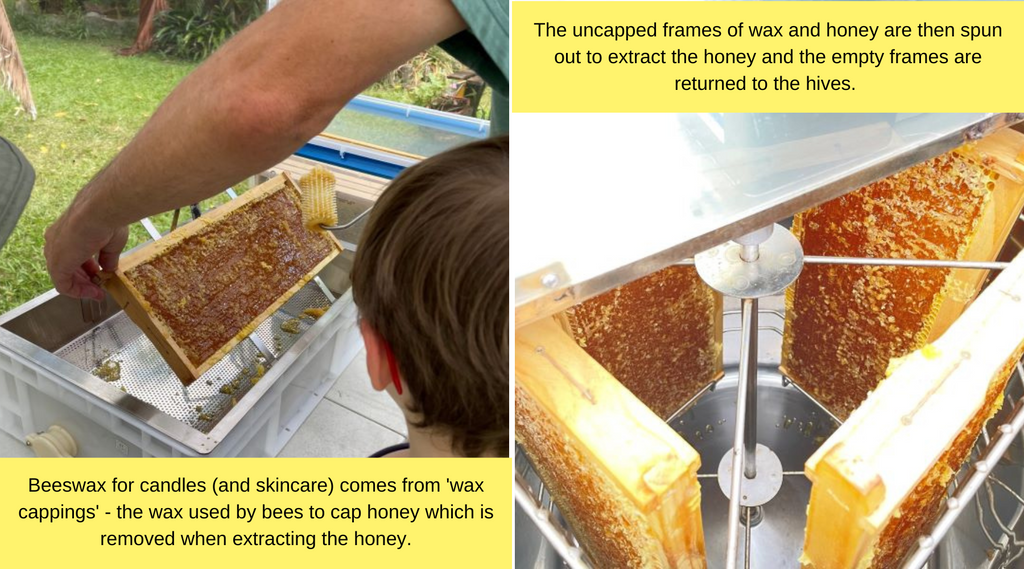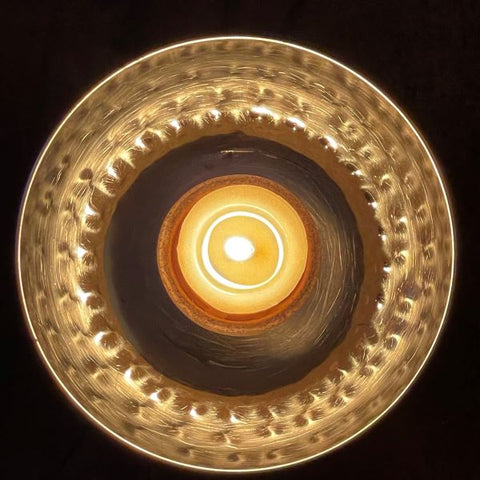7 Reasons You Should Use Beeswax Candles in Your Home & Office
“What distinguishes candle from other lights is that it appeals to our soul, not our eyes!”
―
I stopped using tealight candles over 10 years ago when my eldest child was born and I discovered that burning candles contributes to indoor air pollution. I had been using paraffin tealights in the living and bedrooms just about every day. Who doesn't love the soft, warm & relaxing glow of candlelight in an oil burner to spread aromatherapy goodness throughout the house or bedroom.
Paraffin candles, which are derived from petroleum, can release toxic chemicals such as toluene, a benzene derivative and a known carcinogen. Coloured and fragranced candles pose an even bigger chemical 💩 storm with the release of volatile organic chemicals or VOCs. Breathing VOCs can irritate airways, eyes, nose and throat. They can cause breathing difficulties and even damage the central nervous system. Some are associated with an increased risk of certain cancers.
Various candle and trade associations attempt to downplay these dangers with claims that studies on candle safety show that these toxic by-products from candle combustion are below safe levels set by government regulatory bodies. As a mum and a health professional, I have a couple of problems with this.
For starters, I see this same issue with food chemicals like preservatives and artificial colours. Safety studies usually examine one chemical at a time, they rarely study the cumulative and additive effects of exposure to multiple chemicals in a single exposure and over a period of time.
A laboratory is not a home. The indoor air quality in many homes is already well known to be highly polluted with the off gassing of chemicals from furniture and carpets, mould, emissions from heaters & stoves etc. Burning a fragranced paraffin candle in the bedroom may be the proverbial camel breaking straw and tip level of VOCs or tolulene from safe to unsafe.
I like to keep our home environment as unpolluted as possible. It's our sanctuary and safe space. A home should be a healthy place. If that means not using candles that release a range of toxic byproducts, then so be it.
But what about beeswax?
I love beeswax for skincare. It has a range of skin benefits not found in other alternatives like shea butter or carnauba wax. So, after an experience where burning beeswax candles appeared to significantly help my child's allergic cough during a mould explosion, I started digging deeper into the benefits of burning beeswax.
Beeswax tealights are now a regular feature in our home, especially during winter or whenever anyone is unwell.
I find that tealights are the perfect size for beeswax candles. They're not as expensive so there's less tendency to want to save them for special occasions. They also burn for the perfect length of time and can be kept in a glass candle holder to make them safer. Burn them in your home or office to create a healthier environment. In fact, I have a beeswax tealight burning next to me as I type this.

7 Reasons to Burn Beeswax Candles in your Home or Office
Here are 7 reasons why you should use real beeswax candle in yourt home or work rather than potentially toxic paraffin and fragranced candles.
- Beeswax candles help to purify the air by creating negative ions.
- The soft warm glow from beeswax candles calms the brain for a better night’s sleep.
- The smell of beeswax candles is amazing AND it’s 100% natural and healthy with no toxic synthetic fragrances
- Beeswax candles are hypoallergenic, making them suitable if you have allergies or chemical sensitivities (but make sure your beeswax comes from ethical beekeepers who don’t use chemicals which can find their way into beeswax)
- Beeswax candles are a true renewable resource.
- Beeswax has the highest melting point out of all candle wax options, so beeswax candles burn for longer.
- Purchase from local candle makers and you'll be helping to support two small, local and usually family-owned businesses – beekeeper and candlemaker

Health from the Hive
Beeswax is a precious product that really isn’t treated with the full respect that it deserves.
I didn’t really understand the magic of beeswax until we began to tend to our own beehives on family property in the Noosa Hinterland. It was only then that I truly started to appreciate both honey and beeswax for the amazing substances that they are.
Every kilogram of real honey is the concentrated nectar that bees have collected from over 4 million flower blossoms. Bees use their own honey to produce the beeswax that they construct their hive from and store their honey with.
Beeswax is a precious resource to bees; it’s been estimated that it takes 2.72kg of honey to make 0.45kg of beeswax.
Both beeswax and raw honey are loaded with particles of flower pollen from the area local to the beehive. In fact, pure beeswax is white when it’s first built and becomes yellow as the bees trample pollen all over it. This is part of the reason why beeswax candles smell so amazing as they burn – you’re inhaling the aroma of 100% natural flower pollen incense as the wax burns!
Why I changed my mind about beeswax candles
After discovering just how precious beeswax is, I didn't want to use beeswax candles anymore – it just seemed like such a waste of this amazing substance. However, two things changed my mind. The first was observing the process as we uncapped our very first frames of sticky, delicious honey. I saw firsthand that the wax used for beeswax candles is a by-product from honey harvesting and it would be more wasteful to discard it and throw it away.
The wax for candles (and skincare) comes from the wax that is removed from the top surface of full frames of honey when the honey is extracted. The frames are then spun to remove the honey and returned to the hives where the bees clean up any honey remnants and set to work to refill the frames again.
The second event that converted me to beeswax candles was during a mould explosion that occurred on the Sunshine Coast, Qld around March 2022 (locals will know exactly what I’m talking about). Our eldest son had a horrid dry cough around this time and I had some beeswax tealight candles that we'd picked up from our local markets. I knew that beeswax candles had a reputation for cleansing the air by generating negative ions, so i lit a couple and placed them in a glass hurricane lantern.
Like many kids, my son was drawn to the candle like a moth to a lamp. He sat there for a while just watching the flames flickering and breathing in the delicious, clean and natural aroma of pure beeswax as it burned. After a while I realised that he had stopped coughing and the snuffly congestion in his nose had started to clear up. He had noticed it as well and attributed it to the ‘fresh air smell’ from the candle.
We’re now beeswax tealight converts and burn them regularly to freshen the air – especially when anyone is sick.
How did the beeswax tealight candle help him? To be honest, I don’t know. Staring at the warm glowing flame of a beeswax candle and inhaling that clean honey-pollen aroma is certainly incredibly relaxing. Staring at a candle is a wonderful way to enter a deeply meditative space, the sort of space where amazing things happen - including spontaneous healings. It could have also been the negative ions generated by the burning beeswax candles clearing irritating mould spores from the air around him? Or perhaps inhaling small amounts of antibacterial propolis being burned in the beeswax?
I don’t have a firm answer as to why it helped, but we’ve been frequent users of beeswax tealight candles ever since then.
Burn a beeswax tealight candle while you meditate or do yoga.
Keep one or two beeswax candles on your coffee table or kitchen bench and keep the lights dimmed low to help improve sleep quality for the whole family.
Burn one on your bedside table to purify the air and clean out stale energy before bed – just make sure to put out the candle before you go to sleep!
Beeswax candles are healthy, beautiful and sustainable. Use them to help create a calm and clean living and working space. Whenever you light one, offer up a small thanks to all the hardworking bees who create this amazing substance used to make the best candles and natural skincare.
Beeswax Candles FAQ
What size beeswax candle is the best?
I love beeswax tealight candles the best (votives come in as second favorites). They're a practical size for busy people and families. We use re-usable tealight holders so there’s not even any of those little aluminum candle holders left over when the candle has finished burning (making them even healthier for the environment).
To ensure your beeswax tealights burn properly and evenly so no wax is wasted and you get the full burn time, place them into a suitable tealight holder to keep the wax contained as it burns. To be safe I always recommend placing this inside another, larger glass candle holder. Keep it close. Tealights are only small so they’re not going to able to cleanse a whole room in a short space of time.
Be sure to choose beeswax candles that use only 100% cotton or hemp wicks.
Where does beeswax for candles come from?
The beeswax used to make candles comes from something called ‘wax cappings’. Wax cappings are the wax that is cut or scraped off the top of a frame of honeycomb before the honey is spun out of them. These scrapings are collected and then rendered to clean them up. Rendering the wax is done by heating it up in boiling water to separate the wax from any impurities. This is done several times to purify the beeswax. Beeswax for candles must be very pure – if there are any large impurities left in the wax, the candles will not burn properly. Impurities left in beeswax for candles can create sparks when the candle burns.
Are bees harmed when collecting beeswax and honey?
Bees and their homes are NOT harmed in the process of collecting wax for candles. The wax is a by-product of collecting honey. Despite internet rumours, whole beehives are NOT melted down to obtain beeswax. An ethical beekeeper will always leave plenty of honey behind to ensure a healthy hive. A beekeeper that takes too much honey risks creating a weak hive that is vulnerable to pests and disease – these types of beekeepers do actually exist but are not common.
As a beekeeping partner, I like to think of the honey and wax we receive from our beehives as an exchange of services. We regularly check and tend our hives to keep them free from pests and diseases like hive beetle. This is hot and hard work. In return, the bees share with us with some of their excess honey (and beeswax).
How do beeswax candles clean the air?
A candle flame is a chemical reaction in action. Beeswax produces negative ions while burning. Negative ions are also naturally generated by waterfalls and breaking surf. Negative ions attach to substances floating about in the air with a positive charge – dust, pollen, mould, odours and other toxins. The positive and negative charges attract each other so that they bind together, become too heavy and then fall out of the air.
How do beeswax candles burn?
Beeswax candles burn with a beautiful bright, warm toned flame. With a higher melting point, they burn for longer than other candles and also drip much less as a result.
How much essential oil should you use for beeswax candles?
Beeswax doesn’t need essential oils, instead keep your essential oils for use in an oil vaporiser and the let the subtle and natural smell of beeswax create an ambient aroma in your home.
How much fragrance oil should you use for beeswax candles?
I don't recommend using fragrance oils in beeswax or any other candles. Candle fragrances contain volatile organic compounds (VOCs) and other unhealthy compounds like phthalates which are added to 'bind' the fragrance and make it last longer. These chemicals are released into your room and home as the candle burns and are associated with a range of health problems. Extent of exposure to scented candles and prevalence of respiratory and non-respiratory symptoms amongst young university students - PMC (nih.gov)
Are beeswax candles safe?
Beeswax is permeable, and chemicals such as pesticides, insecticides, miticides, herbicides, and fungicides can accumulate in the wax. Fortunately, in Australia, we [so far] do not have Varroa mites which makes it much easier to practice chemical free beekeeping. Be sure to buy your beeswax candles from a candlemaker who uses beeswax from chemical free hives.
Are beeswax candles sustainable?
YES beeswax candles are sustainable and environmentally friendly. Bees use their own honey to make beeswax. They pollenate plants as they collect nectar to make the honey. This makes beeswax 100% renewable and no chemicals or pollutants are produced as by products – unlike with paraffin candles.
The processing of beeswax uses nothing more than hot water to render the wax and remove impurities - so creating beeswax candles does not contaminate the environment through chemical processing.
To make beeswax tealight candles even better for the environment, choose ones that have a reusable tealight holder rather than single use aluminum ones.
How do beeswax candles smell?
Natural beeswax candles never burn with that overpowering, headache inducing chemical fragrance smell!
Beeswax candles have a subtle, 100% natural smell – sort of earthy with a soft honey-floral smell. Much of the smell from beeswax candles comes from the flower pollens embedded within the wax. Unlike synthetically scented candles, the natural sweet & earthy aroma from beeswax candles will never overpower your sense of smell.
Why are beeswax candles so expensive?
Beeswax is a precious resource for bees. The beeswax used for candles comes from the cappings scraped off when honey is extracted from a frame of honeycomb. It’s then collected, melted down and purified. Although it’s a 100% renewable resource, you cannot take excess wax from a hive or force bees to produce more wax. On the other hand, paraffin candles are less expensive as paraffin is cheap to produce in large quantities and can be easily mass produced.
Beeswax has a much higher melting point than other waxes used to make candles, so although beeswax candles are more expensive, they have a much longer burn time.
Why are beeswax candles better?
Beeswax candles are better than other types of wax candles for several reasons:
- They have a much longer burning time
- They are 100% renewable and natural
- Safe for allergy sufferers and anyone with chemical sensitivities
- They do not require the use of any artificial fragrances to make your room smell amazing as they burn
Where can you purchase beeswax candles?
Check out your local markets or farmers markets for locally made beeswax candles. Otherwise find a supplier online. I recommend using beeswax candles made from Australian beeswax to support our local beekeepers.
If you have a favourite beeswax candle supplier in Australia, why not list them in the comments!
Who makes the best beeswax candles in Australia?
Our local beeswax candle dealer is Jesse from Golden Sun Candles who we met at local markets in the Noosa Hinterland. We love Jesse's tealights as they come without the aluminum holder found on other tealight candles, making them a more environmentally friendly option. We use Jesse's beautiful stoneware tealight holders for burning our candles.
Love beeswax? You might be interested in the following Healthy Skin[care] products that contain Noosa Hinterland beeswax sourced from our own beehives and other ethical beekeepers. Naturopath & Nutritionist formulated and made by hand in small batches, Australia.
Blue Tansy Serum
A rich, old-school serum designed to replace your moisturiser, safe to use around eyes. Created with Beeswax combined with organic Blueberry Seed oil, Blue Tansy oil, natural Vitamin E and Olive Squalane. Deeply moisturising and protective. Blue Tansy is also wonderful at helping to reduce heat and redness from rosacea prone and mature skin.
Blue Tansy Serum is not only healthier for your skin than traditional moisturisers, it's also totally scent-sational without the use of any artificial or even 'nature derived' fragrances thanks to the delicious smell of the Blueberry Seed Oil and Blue Tansy.
Jojoba Sensitive Skin Barrier Balm
A safe and simple combination of organic Jojoba Oil, Beeswax, natural vitamin E and Vitamin D. Multiple uses - lip balm, eye balm, skin balm.
Black Castor & Argan Oil Moisturising Balm
Organic Black Castor Oil, Argan Oil, Beeswax and natural Vitamin E make a highly protective and moisturising balm for lips, eyebrows and eyelashes.
Rosehip & Blackseed Oil Balancing Balm
A natural "medicated" balm for dry and scaly skin created from organic Rosehip and Black Seed Oil with Beeswax and natural Vitamin E. Great lip balm or skin treatment for irritated, itchy and inflamed rashes and skin conditions.
Moisturising Balm for Extra Dry Skin
A rich and intensive balm formulated for extra dry skin. Fragrance and preservative free. Suitable for adults, children and infants and can be used on face and body. Suitable to use around the eyes and lips. 100% best for skin ingredients: Olive Squalane, organic Jojoba Oil, Noosa Hinterland Beeswax and natural Vitamin E.
1 comment
Your perspective on this topic is truly eye-opening. The way you presented your ideas was both engaging and thought-provoking. Looking forward to reading more of your content. Keep up the great work!
Visit: https://rawlight.com.au/
 Skip to content
Skip to content


